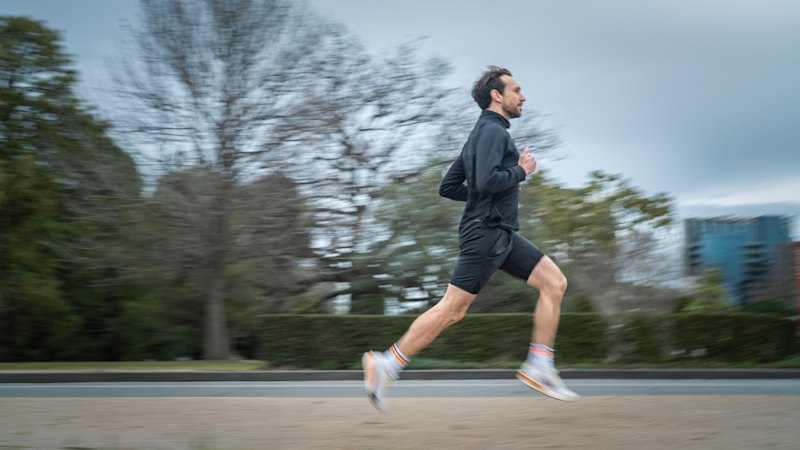
UPDATE: Runners are being urged to reassess their running techniques as new insights reveal that improper adjustments may lead to increased injuries. Matt Davies, a Melbourne-based runner and CEO of MakerX, transformed his marathon time to 2 hours, 48 minutes, 54 seconds but faced persistent injuries before refocusing on his running form.
Over a span of four years, Davies trained with gait retraining specialist Paul Mackinnon, known on social media as @thebalancedrunner. This collaboration allowed him to address specific running flaws gradually, which has proven to be effective. “It was a really powerful way of teaching someone,” Davies stated about the method that emphasized small, manageable changes.
Experts warn, however, that many runners may face more harm than good when attempting to alter their running form without professional guidance. Christian Barton, a professor at La Trobe University, confirms that technique changes can lead to new injuries, especially if adjustments are made hastily. “I see people getting injured all the time changing running technique,” he noted.
The conversation surrounding running technique is heating up, especially for aspiring marathoners. Many runners believe that changing their form can enhance speed and prevent injuries. While Davies experienced success, Barton cautions that studies show running style is not a significant cause of injuries. “There’s no conclusive evidence to suggest differences in biomechanics explained the development of running-related injuries,” he explained.
For those considering technique changes, experts recommend focusing on training programs instead. Eoin Doyle, a lecturer at Macquarie University, emphasizes that injuries often stem from training errors, such as increasing intensity too quickly. “Training errors are your main cause of running injuries,” he stated, urging runners to build their training gradually.
Runners should prioritize strength and conditioning over immediate changes to their form. Barton advises that incorporating strength exercises can significantly reduce injury risk. Key exercises include performing 10 to 12 repetitions of single-leg bridges and heel raises, alongside maintaining a wall sit for 45 seconds.
As athletes consider their running approach, the potential for improved performance does exist with proper coaching. Doyle suggests that refining running technique could lead to better efficiency over time, particularly with professional assistance. Drills that focus on increasing cadence and minimizing ground contact time can enhance performance.
Currently, the running community is evaluating the implications of these findings. Runners are encouraged to tread carefully when altering their techniques and to seek professional advice to avoid injuries. “I wouldn’t try and change running technique without actually seeking out someone who knows what they’re doing,” Barton warned.
This urgent message is resonating within the running community as athletes aim to balance speed and injury prevention. Runners are advised to consider their individual needs and adapt their training and techniques cautiously. The path to improved performance lies not only in speed but also in a solid foundation of strength and well-informed adjustments.
Stay tuned for more updates on this developing story as runners continue to seek optimal techniques for performance and safety.





